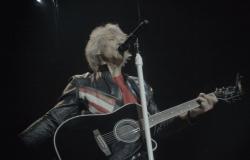A new meeting of the literary festival promoted by the “Fables” Association took place in the council chamber of the Municipality of Cerda. The book “The hilarious story of sad men” by Michele Iacono, PAV editore (2024) was presented. The meeting, introduced by the president of the Fables Association Cruciano Runfola, saw various contributions. Michele La Tona’s with precious observations and Francesca Caronna’s with detailed and timely analyses. Enza Pedone coordinated the work while Salvina Cimino read some passages from the book.
Michele Iacono, born in Termini Imerese in 1954, graduated in Pedagogy in Palermo. He worked as a trainer for the Costa Foundation and taught developmental psychology and animation techniques at Ecap. He practiced as a psychotherapist in centers for fragile people and drug addicts. Having moved to Turin at the age of six, he also published numerous texts, including research on human communication and an essay on painting, having set up his first exhibition in 1978 at the age of 24.
Here is the incipit to have a tasty and engaging taste, right from the first lines, of Michele Iacono’s novel: «Everything suddenly fell apart. It happened in a few days and that terrible disease spread, cutting human life with its scythe. From one day to the next we found ourselves alone, dismayed, locked up and deprived of that immense word that no one thinks about until it is lost: Freedom. And without even asking themselves whether it was right or wrong, everyone holed up in their homes, locked in body and soul.
Yet we had to go out for that entirely human task that requires food, if only to avoid dying of hunger. Finding yourself among the silent crowd, orderly in her direction, wasn’t exactly nice. On the one hand it was nice to see people for that feeling that unites the species, on the other everyone knew that their neighbor could infect and without much ceremony they kept away. In that line everyone moved slowly, keeping about two meters away from the other, their shoulders hunched as if to defend themselves, with their body as compact as possible in the face of an invisible but present enemy; a reality that no one would have ever dreamed of happening. […]»
And again we say that the synopsis of this novel offers an intriguing and mysterious introduction to the plot. Through the story of an individual who passes himself off as a writer and a manuscript that seems to have the power to transform reality, a scenario opens up full of hilarious, tragic and conspiracy-filled elements.
The story follows a series of surprising events, such as the fact that the manuscript is also found by a man who takes refuge to escape the pandemic. From here, the narrative develops through the transformation of fiction into reality, giving life to a series of characters and extraordinary situations, such as a story of spies invented by Andrea Guerritore and the discovery of a strange room of portraits of humanity in the basement of La Scala Theater in Milan.
Surreal elements such as Prof. Morgante convinced that he is a descendant of the Nefilim and a librarian convinced that he has discovered a terrible truth contribute to creating an environment full of mystery and tension. Furthermore, the context of pandemic, war and the struggle between good and evil add depth to the plot, bringing out the nuances of human suggestions that mix between reality and unreality.
The crucial question of who the writer is capable of confusing reality and fiction adds a further element of suspense and mystery, posing a challenge to the characters in the novel who must try to extricate themselves from this intricate labyrinth of illusions and hidden truths.
Saints Licata
For Latest Updates Follow us on Google News





